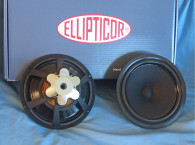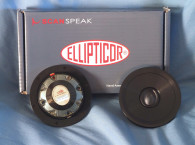

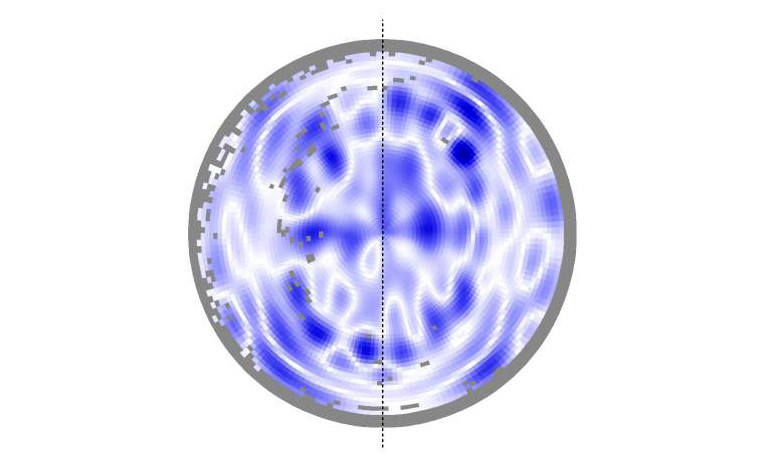

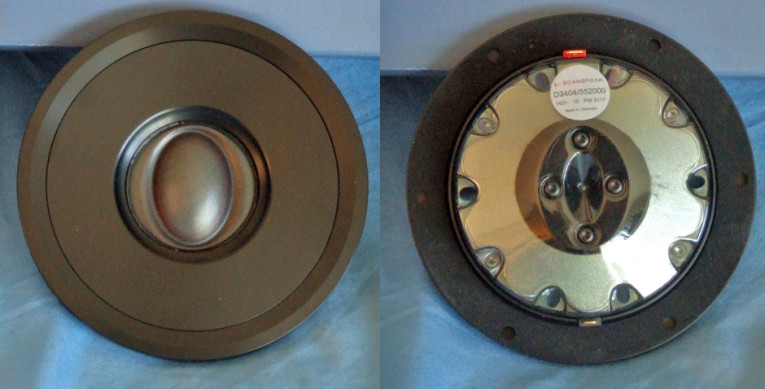
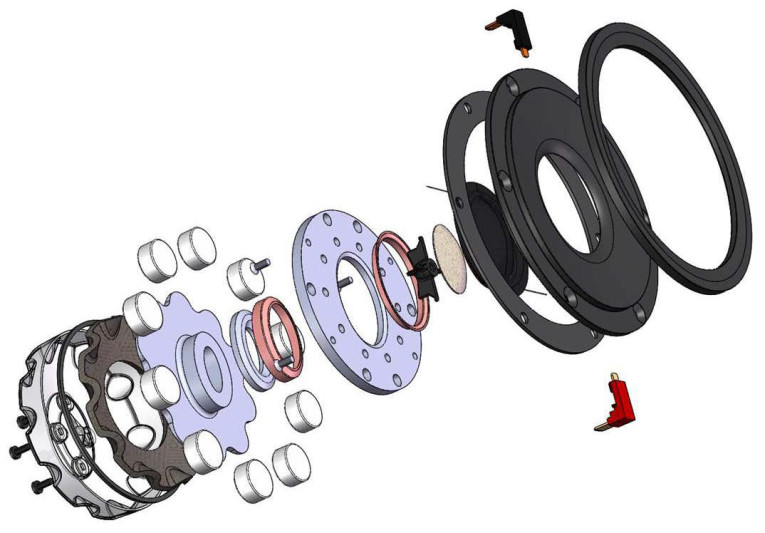
Scan-Speak has tried different techniques over the years to suppress cone modes (a source of coloration), the most notable one being the Revelator sliced cone series of woofers such as the 18W-4531G00 shown in Photo 1. With this concept, cone modes are suppressed by angled slices in the cone that are glued back together. This product was extremely popular in the high-end two-channel market when it was introduced.
The idea of using elliptical-shaped voice coils to control cone and dome modes came from an engineering brain storming session that involved Birger Jorgensen (sadly Birger passed nearly two years ago). One of the goals for a new driver concept at Scan-Speak was to minimize cone modes, so it was kind of a joke to suggest an elliptical voice coil, but some engineering humor that had some solid science behind it. By not driving the diaphragm asymmetrically, what you get is an “infinite” number of Eigen frequencies, but with less contribution for each frequency and overall lower distortion. Driving the diaphragm symmetrically you get a finite number of Eigen frequencies with a higher contribution combining at certain frequencies producing the “dreaded” coloration modes.
Photo 2 and Photo 3 show the mode difference using finite element analysis (FEA) with a scanning vibrometer technique to visualize the difference between a cone driven symmetrically with a round voice coil (see Photo 2) versus a cone driven asymmetrically with a elliptical voice coil (see Photo 3). I should also note that the concept of using asymmetry to suppress diaphragm modes, not with an asymmetrical voice coil, but by using an asymmetrical diaphragm with a round coil was patented by Enrique Stiles, my friend, consulting associate, and extremely clever transducer engineer, in US Patent Number 7177440.
From this exciting concept, developed at Scan-Speak, came the two elliptical voice coil samples that the company sent me for this installment of Test Bench, the Ellipticor D3404/552000 tweeter (Photo 4) and the 18WE/4542T00 7” diameter midbass driver. Photo 5 shows the exploded diagrams for the D3404/552000.

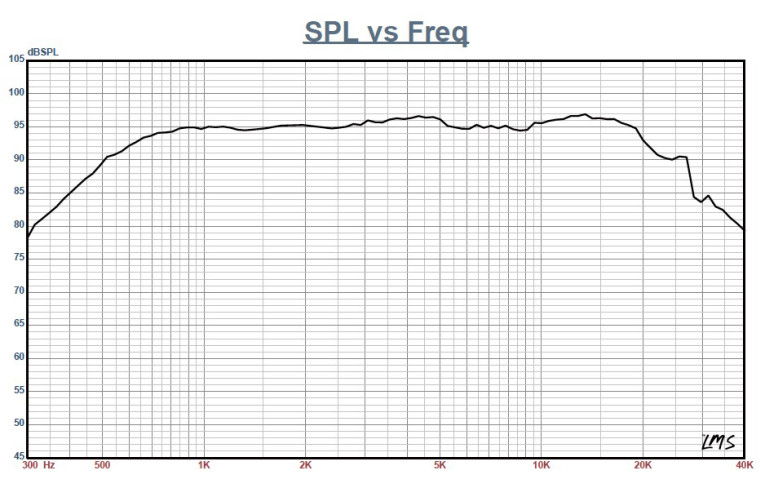

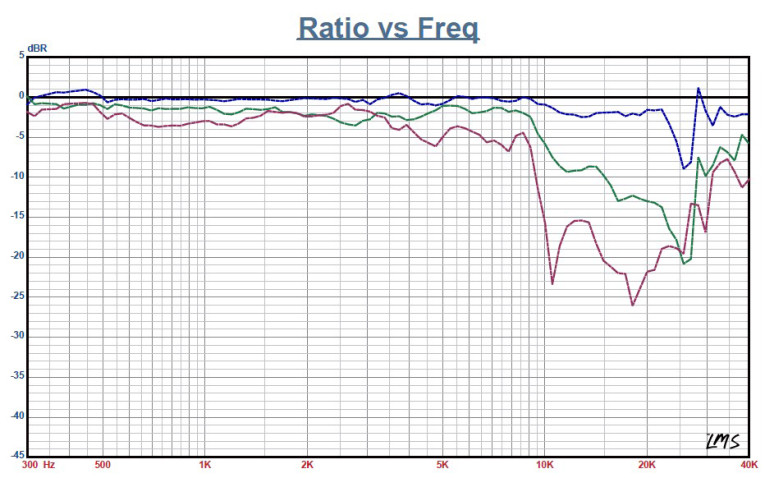
The D3404/552000
The first elliptical voice coil device I characterized this month was the Scan-Speak Ellipticor D3404/552000 dome neodymium motor tweeter. Overall, the D3404/552000 is a big tweeter with a diaphragm Sd (11.4 cm2) equal to somewhere between a 38 mm (14 cm2) and a 28 mm (8.5 cm2) conventional round dome tweeters. The voice coil diameter is 28 mm × 39 mm, so you could think of it as an elongated 28 mm diameter tweeter.
For a motor system, Scan-Speak basically scaled up their currently successful Air-Circ tweeter motor with 10 (versus six slugs for the original Air-Circ motors) neodymium slugs and copper shorting rings (part of the patented Symmetrical Drive SD-2 motor format) and a titanium former.
The motor system is underhung like most tweeters, and has a gap height of 3 mm and a voice coil length of 2.5 mm for a 0.25 mm Xmax. The big news is that this motor and diaphragm yield a 2.83 V/1 m sensitivity of 97 dB!
Other features include a coated cloth elliptical dome, aluminum face plate, gold-plated terminals, and a very slick aluminum trim ring that covers the mounting screws. This “beauty” ring snaps into place and is held tight through the use of three neodymium magnets mounted on the underneath side around its peripheral.
I used the LinearX LMS analyzer to produce the 300-point impedance sweep illustrated in Figure 1. The D3404/552000’s impedance resonance occurs at 500 Hz (factory spec is 475 Hz). With a 3.31 Ω DCR (the factory spec is 3.0), the minimum impedance for this tweeter measures 3.56 Ω at 1.9 kHz.
Following the impedance testing, I recess mounted the Ellipticor tweeter in an enclosure that had a baffle area of 22” × 12” and measured the on- and off-axis frequency response. I spoke with LOUDSOFT representatives at AISE 2018 and they are planning to send me their new FINE Hardware 3, which is a 192 kHz two-channel analyzer, capable of measuring tweeters out to 40 kHz (the LOUDSOFT analyzer I am currently using only measures SPL to 20 kHz).
However, it might be a month or so before I receive it. Since the Ellipticor driver is such a unique new offering for the industry, I decided to measure the SPL using the LinearX LMS analyzer for this explication, as it goes out to 40 kHz. So, I set up the LMS analyzer to 100-point gated sine wave sweeps at 2.83 V/1 m.

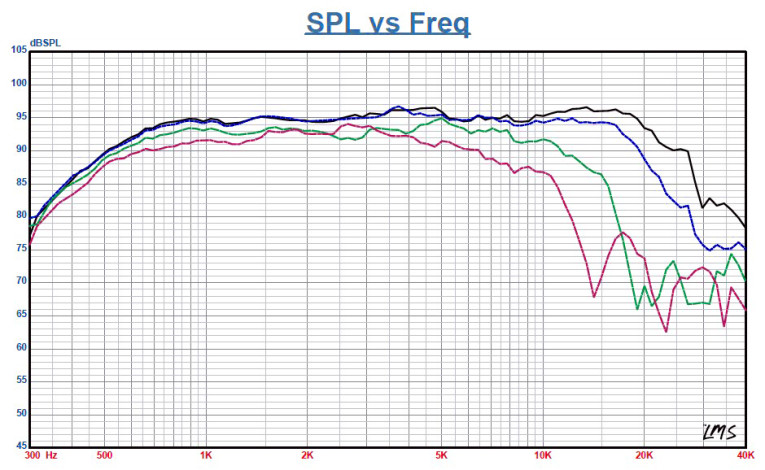


Figure 2 shows the on-axis response to be a smooth ± 2 dB from 730 Hz to 20 kHz, and ±1 dB from 1.7 kHz to 18 kHz. Figure 3 depicts the on- and off-axis (0° to 45°) response of D3404/552000. The off-axis curves normalized to the on-axis response are shown in Figure 4. Figure 5 shows the CLIO 180° polar plot (measured in 10° increments). These measurements were all made with the D3404/552000 dome in the normal vertically oriented position. Since the height of the dome is greater than the width, I decided to investigate if there was any vertical directivity. Figure 6 gives the on- and off-axis with the tweeter in a horizontal orientation. Since it’s a bit hard to compare with Figure 3, I compared them to orientations at both 30° off-axis (see Figure 7) and both orientations at 45° off-axis (see Figure 8).
Most of the variation comes above 10 kHz where the response is rapidly declining, so I really think vertical directivity due to the diaphragm’s shape is trivial and not really much of a concern. The last SPL measurement was the two-sample SPL comparison (see Figure 9), indicating the two samples were closely matched to within less than 1 dB throughout the driver’s operation range.

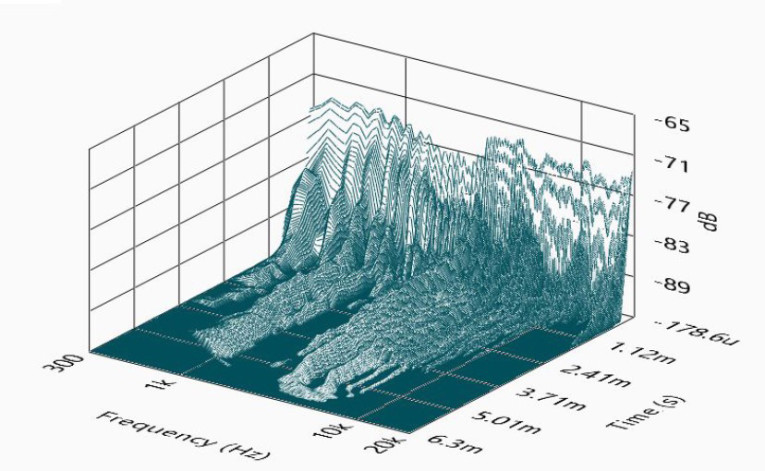
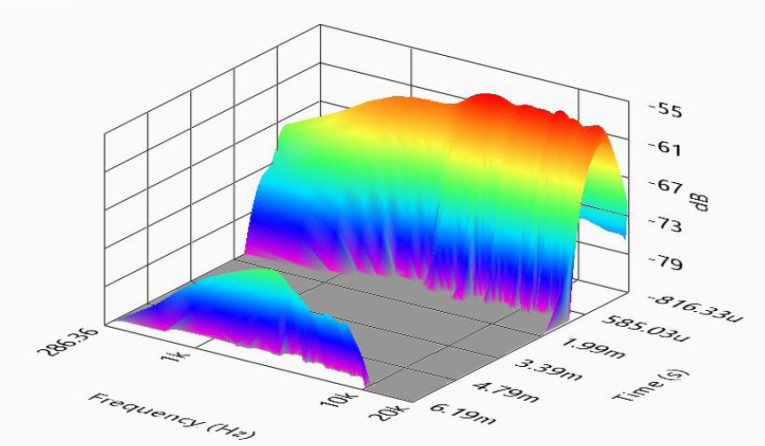

The next test sequence in the Test Bench protocol was to use the Listen, Inc. AudioConnect analyzer along with the Listen SCM 0.25” microphone and SoundCheck 16 software (provided courtesy of Listen, Inc.) to measure the impulse response with the Ellipticor tweeter recess mounted on the test baffle. Importing this data into the Listen SoundMap software produced the cumulative spectral decay (CSD) plot (usually referred to as a “waterfall” plot) shown in Figure 10. Figure 11 shows the Short Time Fourier Transform (STFT) displayed as a surface plot.
For the last test procedure, I set the 1 m SPL to 94 dB (2.34 V) using a pink noise stimulus, and measured the second (red curve) and third (blue curve) harmonic distortion at 10 cm (see Figure 12). Note the third-harmonic distortion is extremely low, less than 0.4%. All things taken together, this is an impressive accomplishment for Scan-Speak.
For more information about these and other Scan-Speak transducers, visit www.scan-speak.dk. VC
This article was originally published in Voice Coil, April 2018




